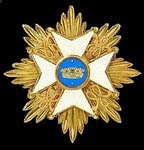Chefs: 30th October 1745 Major General Carl Erhard von Kalnein, later Lieutenant General; 14th October 1757 Major General Carl Friedrich von Rautter; 20th September 1758 G F von Kleist to 27th January 1761; to 8th June 1774 Major General Georg Reinhold von Thadden, later Governor in Glatz
First raised 1672
In the Seven Years War it served almost entirely against the Russians. It was in the Corps under the command of Field Marshal von Lehwaldt which had the task of securing East Prussia; as an East Prussian regiment it was therefore defending its homeland. The East Prussian troops had been mobilised in February 1757. The Russians under Field Marshal Count Apraxin crossed the border on August 1st 1757 and joined the corps of Count Fermor west of Insterburg, to a total of 55,000 men with 79 guns. 73 year old Lehwaldt had 26,000 men with 20 heavy guns. He planned to attack the Russians from the south on August 30th in an attempt to push them back to the Pregel. The Prussians surprised the Russians at the edge of the Norkitten Forest and the regiment helped drive the Russians back into the forest, losing 78 men and the commander of the grenadier battalion (4/16), Johann Dietrich von Polentz. The musketeer battalions became isolated in the smoke and thick woodland, losing heavily; in the confusion some Prussian battalions were firing into each other. Lehwaldt finally withdrew his battered army from the field, having lost 4,000 men. The victorious Russians were even more disorganised and had lost more heavily, with their supply arrangements in disarray. Both armies evacuated East Prussia.
The next year in August a larger Russian army was at the Oder at Zorndorf, led by Count Fermor, a better commander than Apraxin. The First Battalion of IR4 was in the left wing commanded by Lieutenant General von Kanitz. The grenadier battalion was commanded by Major von Kleist and on the left wing in the advance guard. The left wing attacked first. The grenadier battalion, after attacking a Russian artillery battery, being involved in an attack against the Russian counter-attack then in the afternoon facing the Russian cavalry attack, suffered 28 dead including the commander, 206 wounded and 176 missing or captured and thus lost two-thirds of its strength. (Duffy, Army of Frederick the Great, 1st Edition (henceforth Duffy AFG1) actually shows around 80% casualties for the grenadiers at Zorndorf.) It was relegated to defending a bridge in Schwedt/Oder. Kanitz's wing veered off to the right and ploughed into the centre of the Russian army, counter to the plan of attack, having initial success but then being routed by a flank attack. Several East Prussian regiments collapsed. Seydlitz led a cavalry attack that helped give the infantry a breather. But Frederick henceforth harboured a deep dislike of all East Prussian regiments including IR4. Eventually both armies separated and drew off to lick their wounds. (Duffy AFG1 shows around 75% casualties for IR4 1st Battalion at Zorndorf.)
In 1761 Major General von Thadden became chef; the regiment had lost its recruitment base and received poor replacements. On July 21st 1761 the regiment was involved in the attack at Burkersdorf and was able to redeem itself to some extent attacking the northern defences. Two Pour-le-merites were awarded in recognition.
Duffy AFG1 says of the regiment: "A poorish regiment, badly knocked about at Gross-Jägersdorf and Zorndorf. Of its Chefs, Rautter was disgraced for his performance at Zorndorf, while Thadden was known as a drunkard".
And this was the uniform in 1756:



















